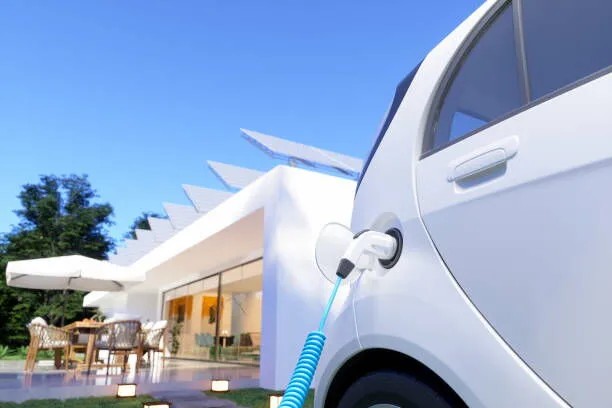Introduction
With the steady rise in electric vehicle (EV) ownership, having a reliable and efficient home China EV charger is more important than ever. Whether you're a first-time EV owner or upgrading your current setup, understanding the different charger types and features is crucial for a seamless charging experience.
EV chargers come in three primary levels: Level 1, Level 2, and Level 3. Level 1 chargers use a standard household outlet and provide a slow but steady charge. Level 2 chargers offer significantly faster charging and are ideal for daily home use. Level 3 chargers, also called DC fast chargers, deliver the quickest charging times but are generally reserved for commercial or public spaces due to their high power requirements and installation complexity.
When selecting a home charger, factors such as your electrical supply and vehicle compatibility must be considered. This guide will walk you through the key considerations to help you choose the best charger for your needs.
Home EV Charging
Understanding EV Charger Levels
Before choosing a charger, it’s important to know the differences among the three levels:
- Level 1 Chargers
- Use a standard 120V household outlet and deliver about 3–5 miles of range per hour. Best suited for plug-in hybrids or drivers with short commutes, Level 1 chargers are affordable and easy to set up but too slow for most fully electric vehicles.
- Level 2 Chargers
- Operate on 240V and provide much faster charging rates — typically 12–60 miles of range per hour, depending on vehicle and charger output. Ideal for home installation, they can fully charge most EVs overnight.
- Level 3 Chargers (DC Fast Chargers)
- The fastest option, delivering up to 80% charge in 20–30 minutes. Due to their high power demands and cost, they are usually found at public stations, not for residential use.
Since Level 3 chargers aren’t practical for homes, your main choice will likely be between Level 1 and Level 2, with Level 2 being the preferred option for most EV owners.
Single-Phase vs. Three-Phase Chargers
Your home’s electrical setup largely determines whether you should choose a single-phase or three-phase charger:
- Single-Phase Chargers
- Operate at 120–240V and are standard in most North American homes. They provide adequate power for overnight or daytime charging.
- Three-Phase Chargers
- Operate at 240–480V and deliver higher power output, enabling faster charging. Common in commercial settings and some European homes, they require a three-phase power supply — rare in most residences without costly upgrades.
Bottom Line: For home use, single-phase chargers are usually the most cost-effective and practical choice unless you already have a three-phase supply.
Type 1 vs. Type 2 Chargers
Compatibility with your EV’s connector is essential:
- Type 1 Chargers
- Feature a five-pin connector, common among American and Asian EVs (e.g., Nissan, Mitsubishi, older Ford models). Best for overnight home charging if you have one vehicle.
- Type 2 Chargers
- Have a seven-pin connector and are the European standard, used by brands like BMW, Audi, and Volkswagen. Typically paired with Level 2 chargers, they offer faster charging and are becoming the global norm.
Tip: If you plan to charge multiple EVs or want future-proofing, consider a Type 2 charger for broader compatibility.
Tethered vs. Untethered Chargers
- Tethered Chargers
- Have a fixed cable attached to the unit, similar to a gas pump hose. Convenient because you don’t need to connect cables each time, but less flexible if you change vehicles or need different cable lengths.
- Untethered Chargers
- Include a socket where you plug in your own cable. Offer flexibility for different EVs and a neater appearance when not in use.
Which to Choose?
Prioritize convenience with tethered chargers; choose untethered for flexibility and future-proofing.
EV Connector Types: Matching Your Car to the Charger
- J1772 Connector
- The most common for non-Tesla EVs in North America, supporting Level 1 and Level 2 charging.
- NACS Connector (North American Charging Standard)
- Formerly Tesla’s proprietary connector, now being adopted by others (Ford, GM, Rivian). If you own a Tesla or a newer compatible EV, ensure your charger supports NACS or use an adapter.
- CCS (Combined Charging System)
- Mainly for DC fast charging, important for public charging networks.
Pro Tip: Always verify your vehicle’s connector before buying a charger, and choose one compatible with your EV or with available adapters.
Installing a Home EV Charger: Plug-In vs. Hardwired
- Plug-In Chargers
- Connect to existing outlets, usually NEMA 14-50 (four-prong, common for EV charging) or NEMA 6-50 (three-prong). Easier and cheaper to install, and portable if you move or upgrade.
- Hardwired Chargers
- Permanently wired into your home’s electrical system for a cleaner look and better weatherproofing. Often necessary for higher-power chargers but require a licensed electrician and higher installation costs.
Key Factors to Consider Before Purchasing
- Charging Speed: Look for chargers with at least 32 amps; some go up to 50 amps for faster charging.
- Smart Features: Wi-Fi-enabled models offer app control, scheduled charging, and energy monitoring.
- Cable Length: Standard cables are 16–25 feet; ensure yours comfortably reaches your vehicle.
- Durability: For outdoor use, choose chargers rated IP66 or higher.
- Future-Proofing: Select chargers that support higher power or multiple EV types.
- Incentives: Research local, state, or federal rebates to reduce costs.
Conclusion
Choosing the right home EV charger is key to maximizing convenience and efficiency in your EV ownership. Consider charger level, electrical phase, connector type, tethered vs. untethered design, and installation methods carefully to find the solution that fits your current and future needs.
Whether installing your first charger or upgrading, informed decisions ensure your EV is always ready to go. Take time to research, compare products, and consult a licensed electrician if needed. With the right home EV charger, your journey will always be fully charged and ready for the road ahead.Know more about Google SEO Directory





Comments